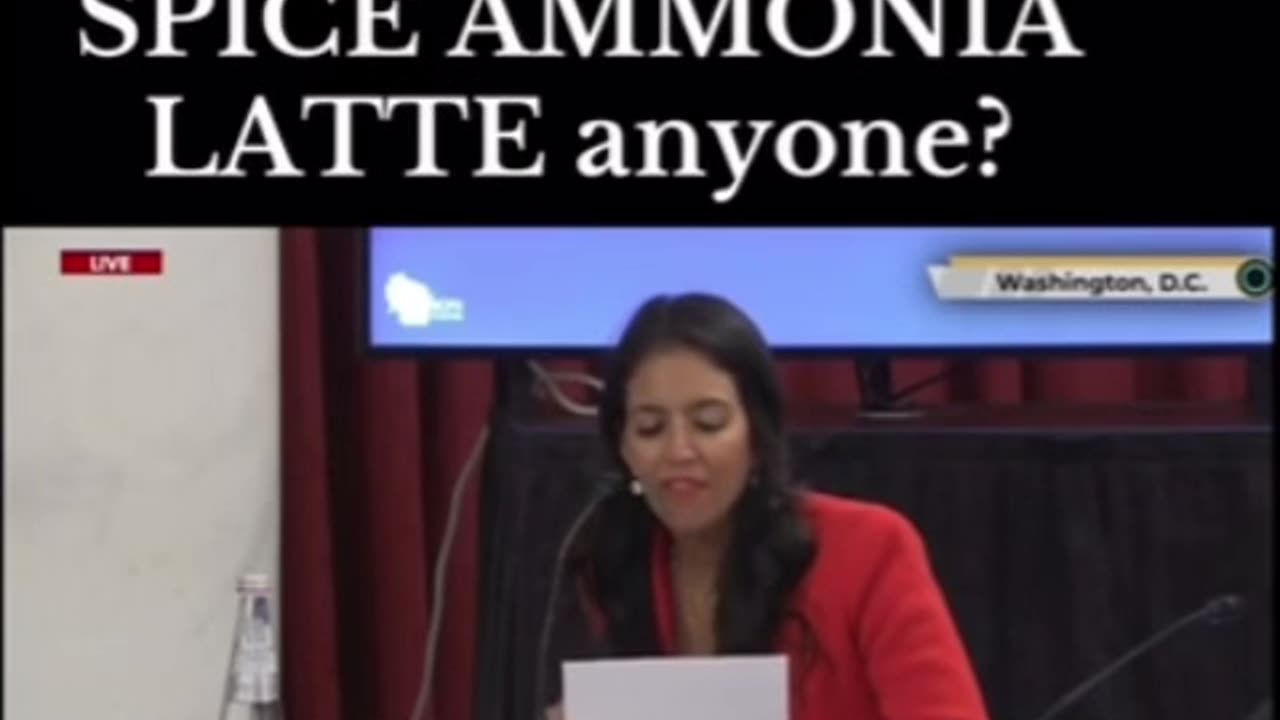Premium Only Content

Starbucks’ Secret Ingredient Saga: How Transparency Transformed the Pumpkin Spice Latte
For years, Starbucks maintained a shroud of mystery around the ingredients in its beverages. Among the most popular—and controversial—was the Pumpkin Spice Latte (PSL). This seasonal drink captured the hearts (and taste buds) of millions, yet its ingredient list remained a closely guarded secret. It wasn’t until a dedicated consumer investigation uncovered what went into Starbucks’ famous drink that the company’s ingredient practices were called into question. This discovery led to significant changes, not only in Starbucks’ approach to transparency but also in its ingredient choices, reflecting broader consumer demand for honesty and safety in the food and beverage industry.
The Secret Behind the PSL: Class IV Caramel Coloring
Class IV Caramel Coloring and Its Risks
The ingredient sparking controversy in the Pumpkin Spice Latte was a specific type of caramel coloring, known as Class IV caramel coloring, or “caramel coloring level 4.” This additive, used to create a deep brown hue, is produced by heating sugars with ammonia, resulting in a compound called 4-Methylimidazole (4-MEI). Animal studies have suggested that high levels of 4-MEI may be carcinogenic, linking it to increased cancer risks in lab tests.
Although the FDA has stated that 4-MEI levels typically found in food are not considered hazardous, consumer advocacy groups and health-conscious individuals voiced concerns over its inclusion in the PSL, especially considering that other, more natural alternatives existed. The reaction to this revelation highlighted a critical issue: why would Starbucks, a globally recognized brand, use an artificial additive linked to health concerns when other options were available?
UK vs. US Ingredients: A Tale of Two Markets
Beta Carotene as a Safer Alternative
Further investigation revealed an interesting disparity: in the United Kingdom, Starbucks’ PSL did not contain caramel coloring. Instead, it used beta carotene, a natural pigment derived from carrots and known for its antioxidant properties. This difference in formulation highlighted the contrast between U.S. and European regulatory standards, as well as the evolving demands of consumers in different markets. Europe has traditionally implemented stricter food safety regulations than the U.S., often opting for natural additives over synthetic ones.
The ingredient discrepancy prompted U.S. consumers to question why Starbucks did not adopt the same standards domestically. This public demand for alignment with international practices fueled the conversation around food safety and raised awareness of the global inconsistencies in ingredient use.
The Role of Consumer Advocacy in Sparking Change
Pressure for Transparency
The mystery surrounding the PSL ingredients finally unraveled due to the efforts of consumer health advocates, including influential bloggers and health-conscious activists. In 2014, a prominent advocate publicly questioned the presence of artificial ingredients, including the lack of real pumpkin in the PSL. This advocacy effort gained significant traction on social media, capturing the attention of consumers and major media outlets alike. Within weeks, Starbucks faced mounting pressure to address the ingredient concerns, and a campaign emerged demanding full ingredient disclosure.
Consumer petitions, social media campaigns, and widespread media coverage created a powerful collective voice, pushing Starbucks to respond. This pressure underscored an important truth in the food and beverage industry: consumer demand for transparency can drive significant change, forcing even the largest corporations to listen and adapt.
Starbucks’ Response: Reformulating the PSL and Embracing Ingredient Transparency
A Shift to Natural Ingredients
In response to the public outcry, Starbucks took decisive action in 2015. The company reformulated its Pumpkin Spice Latte, removing Class IV caramel coloring and replacing it with natural vanilla. Additionally, they introduced real pumpkin puree to provide the authentic flavor that many consumers expected. This reformulation not only addressed health concerns but also created a drink that aligned more closely with consumer expectations.
Following the ingredient overhaul, Starbucks also committed to publishing full ingredient lists for its entire menu in the United States. This transparency marked a significant shift for the brand, helping to rebuild consumer trust and setting a precedent for other major companies. Starbucks’ decision demonstrated that prioritizing transparency and ingredient quality could strengthen a brand’s reputation, especially in an era where consumers demand greater control over what they consume.
The Impact on the Broader Beverage Industry
The Influence of Starbucks’ Decision on Other Brands
Starbucks’ decision to disclose ingredients and remove artificial additives set a new standard within the beverage industry. This case highlighted the role of consumer-driven advocacy in reshaping industry norms, encouraging other companies to review and, where possible, improve their ingredient transparency and safety standards. As a result, companies in the fast-food, packaged food, and beverage sectors began taking similar actions, promoting clean labels and opting for more natural formulations.
The impact of Starbucks’ change went beyond coffee. It reflected a shift in the entire industry’s approach to ingredient transparency, inspiring brands to reevaluate how they communicate product contents and engage with their consumers’ health concerns. This trend toward transparency continues to shape the industry today, driven by consumers who increasingly prioritize health, natural ingredients, and ethical practices.
What This Means for Consumers: Knowledge as Power
The Importance of Ingredient Awareness
The Starbucks PSL controversy serves as a reminder that informed consumers can be powerful catalysts for change. In an age where information is readily accessible, consumers can—and often do—hold companies accountable for ingredient transparency and food safety. The shift toward more natural ingredients at Starbucks is just one example of how public awareness and advocacy can push companies to adopt more responsible practices.
As consumers, understanding what goes into our food and beverages allows us to make informed choices that align with our health and values. This awareness encourages a broader cultural shift toward transparency and accountability, creating a market where companies recognize that honesty about ingredients isn’t just a consumer demand—it’s a standard for good business.
Conclusion: A New Era of Transparency in the Food and Beverage Industry
The journey of Starbucks’ Pumpkin Spice Latte, from its controversial ingredient list to its eventual reformulation, marks a pivotal moment in the push for transparency and healthier choices. This case illustrates how consumer advocacy and public pressure can drive meaningful change, transforming the practices of even the most influential corporations. Today, Starbucks’ ingredient transparency aligns more closely with its brand values, reflecting a commitment to serving consumers safely and responsibly.
For consumers, this story is an empowering reminder: the choices we make, and the questions we ask, have the power to shape the food and beverage industry. As transparency becomes the new standard, we step closer to a world where what we consume is no longer a mystery but a choice grounded in trust and informed decision-making.
-
 1:02
1:02
FragmentsOfTruth
8 hours agoPolarizing Podcast Debate: Politics, LGBTQ+ Rights, and Modern Masculinity
561 -
 1:39:44
1:39:44
HELMET FIRE
6 hours agoDEADROP IS BACK!
92.7K6 -
 10:03
10:03
Tundra Tactical
8 hours ago $9.67 earnedBrandon Herrera Vies Bid for ATF Director!
56.8K8 -
 22:01
22:01
DeVory Darkins
1 day ago $27.54 earnedHakeem Jeffries SHUTS DOWN The View as Matt Gaetz Speaks out
51.5K98 -
 2:02:54
2:02:54
Mally_Mouse
7 hours agoLet's Play!! - Spicy Saturday
35.6K1 -
 1:33:06
1:33:06
Slightly Offensive
7 hours ago $21.39 earnedAre You Ready for What's Coming Next? | Just Chatting Chill Stream
54.1K32 -
 32:10
32:10
MYLUNCHBREAK CHANNEL PAGE
1 day agoThe Gate of All Nations
130K55 -
 13:07
13:07
Sideserf Cake Studio
12 hours ago $2.16 earnedIS THIS THE MOST REALISTIC SUSHI CAKE EVER MADE?
51.1K4 -
 21:08
21:08
Clownfish TV
1 day agoElon Musk Tells WotC to BURN IN HELL for Erasing Gary Gygax from DnD!
40K14 -
 48:22
48:22
PMG
7 hours ago $7.17 earned"IRS Whistleblowers Speak Out on Biden Family with Mel K In-Studio"
33.1K15